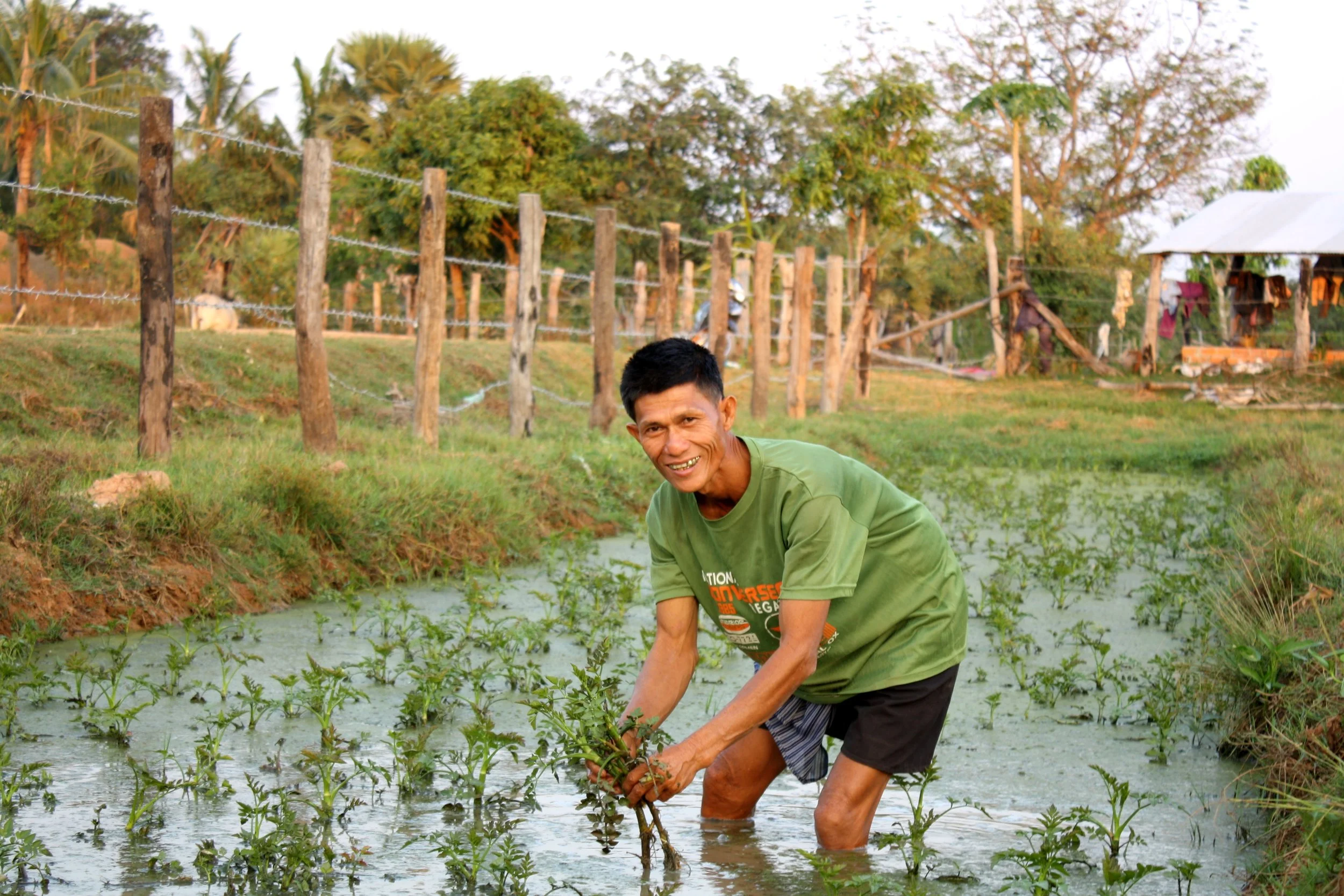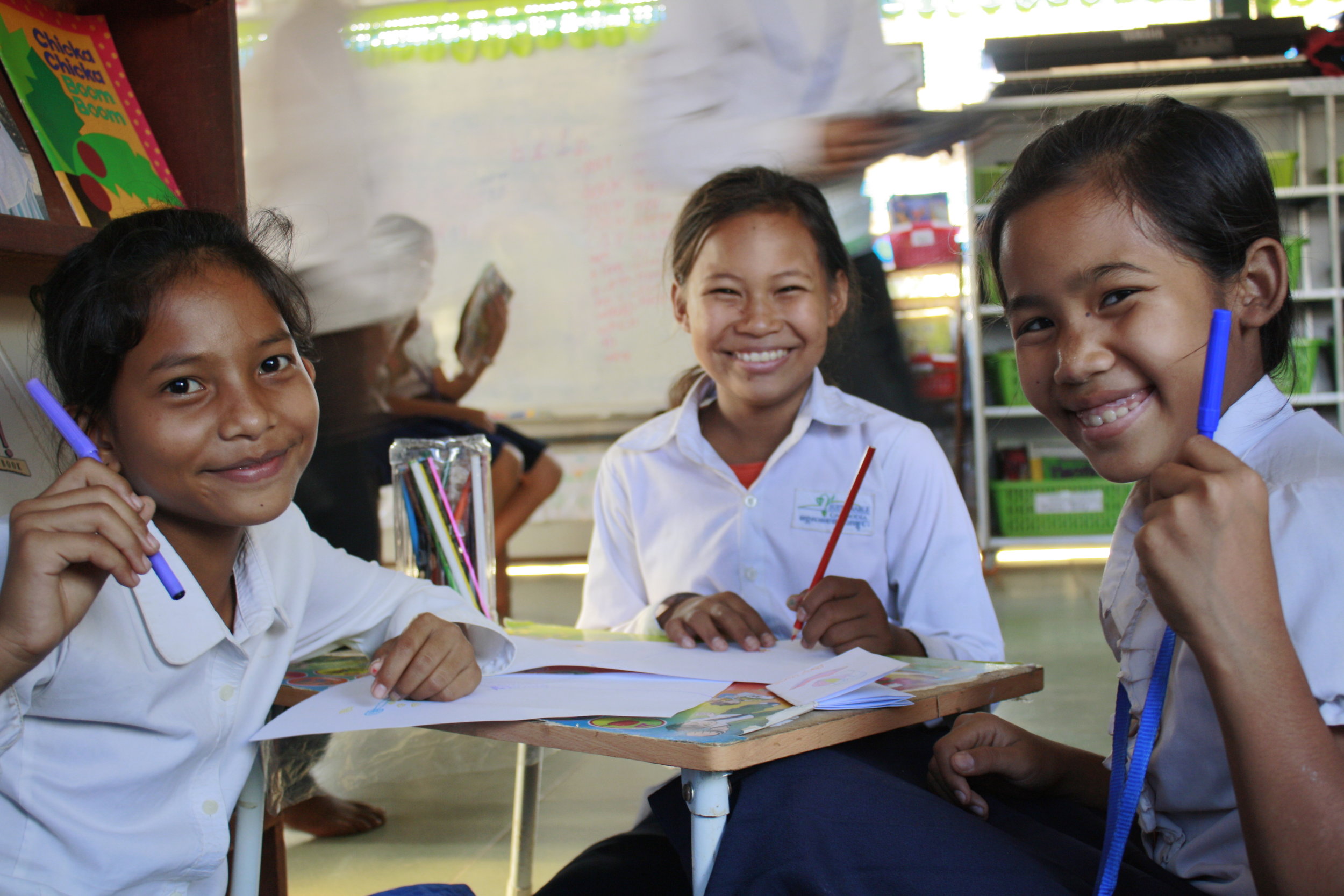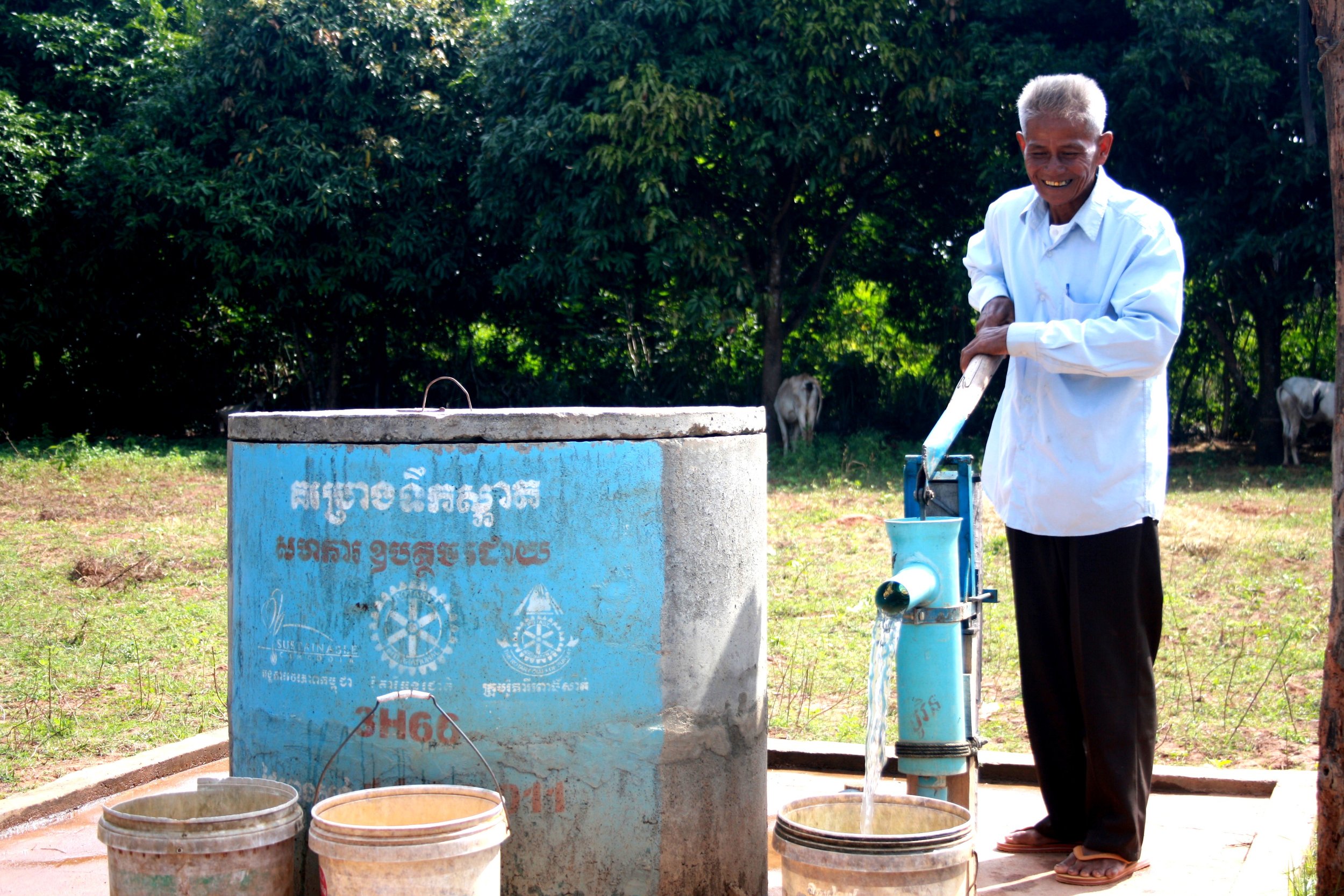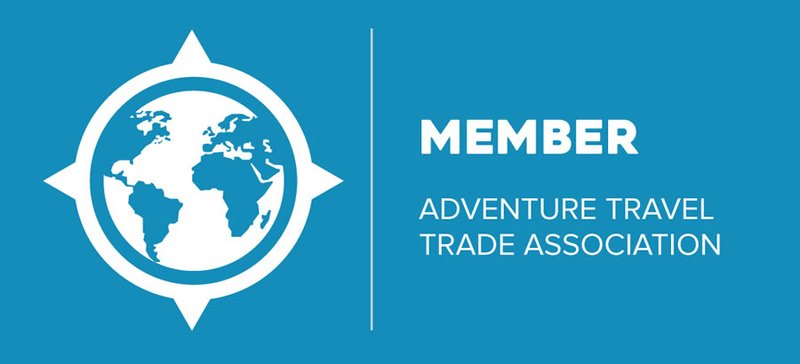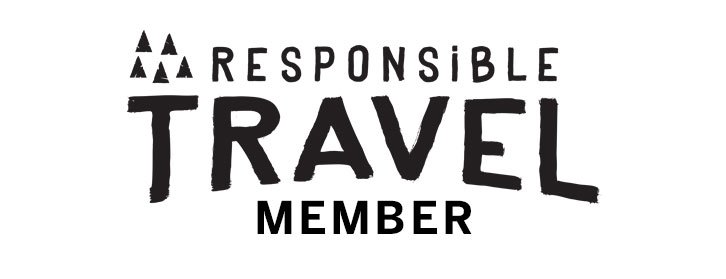Anyone who visits Cambodia will quickly learn that you’ll find a non-profit around nearly every corner. Not all are created equally though, and it takes a commitment and resilience along with sound practices and a meaningful vision to truly effect change. That’s why we want to showcase our partner Sustainable Cambodia that we visit each time we cycle through the town of Pursat. Here’s what we asked them:
First, tell us a bit about Cambodia. What are some of your biggest challenges?
Rural farmers at harvest time.
Cambodia is a small country with population of about 15 million people. It is a Buddhist country, and though many live below the poverty line, it’s great county for tourists and the people are warm and friendly. The villages around Pursat divide by communities consisting of 30 to 60 families or households. About 80% are famers and the rest work in construction, in factories and migrate for seasonal work in other countries.
After the Genocide ended in 1979, Cambodia started growing from zero, as most educated people were killed. Our first National Election was in 1993 after the Khmer Rouge, but fighting continued until 1998. We have seen significant changes since then, and it takes the collaboration of many groups – non-profits, governments, social enterprises, and social-minded tourism – to effect the change we need.
Tell us about what Sustainable Cambodia does and what your vision is.
Sustainable Cambodia provides a range of services for very poor families in the area, including English classes, water filtration systems, and girls’ health education in 30 villages around Pursat. Our vision is to create a model that creates self-sufficiency and quality of life for native Cambodians and to spread the model to other communities throughout the country. To support our vision, we alongside Cambodian government ministries and local people so that villages become self-sustaining communities with an emphasis on healthy water and facilities, good food, health care and education, quality of life, employment and environmental and social responsibility.
Tell us more about Sustainable Cambodia’s primary projects, such as the education program water filtration systems.
In our Education program, we provide supplementary classes for kids in state schools. We teach students the same subjects, but with a higher degree of depth and quality. We also provide English Proficiency and Computer technology. We support the community by hiring local preschool teachers and also include a nutritional breakfast for preschool kids. We also support our older students through our university scholarship program.
Sustainable Cambodia water filtration system.
Our Community Development program started when we realized that some families needed to keep children at home to find water, look after the cattle, or watch their small siblings while the parents went out to work. We incorporate a number of programs such as WASH, Water and Sanitation Hygiene. In WASH, we provide a bio-sand water filter, tank, wells, community pond, latrine and training support. This not only provides sustainable clean water sources, but also creates employment in the process.
In our Agriculture program we provide vegetable seeds, fruit tree, tools, technical and compost training. We also have an income generation project in which we provide animals such as cows, buffalos, and ducks with a pass-on model with their own community.
Girls’ health education is a big topic in the developing world. Can you tell us what SC is doing to address that? What makes the project sustainable and lasting for future generations?
Sustainable Cambodia Sewing Club
We have a Sewing Club that recruits village females that dropped out of school and train them to make dresses, uniforms, and souvenir products. The also participate in the making of our Days for Girls Kit, a feminine reusable hygiene pad that lasts for more than 5 years. SC is qualified and charted to produce and distribute these kits and provide the training on how to use them. It’s based on an empowerment model that SC helped to create, which involves families and local development committees, allowing SC to eventually phase out while ensuring project continuation by the communities.
Talk to us about the Sustainable Cambodia team. Are they volunteers or is it a full time job? What types of daily tasks do they do?
We have 15 people on our board of directors, all of whom are volunteers. SC only employs Cambodian staff, which is currently at 48 full time employees and teachers. We work from Monday to Friday (most Cambodians work 6 days per week), and we often have visitors or non-Cambodian volunteers come at their own cost.
Want to get involved with Sustainable Cambodia? Learn more on their website here, or join us on our cycling trip from Siem Reap to Phnom Penh with SocialCycles and meet them in person!
Rural residents celebrating a new water filtration system.

